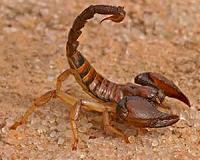 |
Vienna, Austria (SPX) May 02, 2011 The fruit fly Drosophila melanogaster used to be found only in sub-Saharan Africa but about 10,000 years ago it began to colonize Asia and Europe. This period saw the start of human agriculture and the domestication of cats and oxen but we have no evidence to suggest that early agricultural practices were associated with significant global warming, so the fly's northerly spread is thought to relate to genetic factors rather than to environmental changes. An intriguing clue to the mechanism is now provided by Christian Schlotterer from the Institute of Population Genetics at the University of Veterinary Medicine, Vienna. His results are published in the journal PLoSGenetics. Fruit flies that moved from sub-Saharan Africa found themselves confronted by conditions very different from those to which they were accustomed. Most obviously, the average temperatures were considerably lower and so it is no surprise that the flies had to adapt to cope with life in the north. As a result of thousands of years of evolution, populations in sub-Saharan African and in Europe now differ dramatically in a number of characteristics known to relate to temperature (such as pigmentation, size and resistance to cold). Schlotterer's previous work had suggested that a single gene, interestingly known as cramped (crm), might be involved in helping the flies survive in a colder environment but conclusive proof was lacking. The crm protein is a transcription factor, so Jean-Michel Gibert in Schlotterer's laboratory decided to investigate what genes it could regulate, continuing to work on the project following his move to the University of Geneva. Gibert and Schlotterer focused in particular on genes known to be involved in wing development, such as the so-called cubitus interruptus (ci) gene, the regulation of which is known to depend on temperature. Satisfyingly, they were able to show that crm is absolutely required for the inactivation of the ci gene. The scientists reasoned that if the crm protein is important in the response to temperature it should be possible to show that the variants - or alleles - of the crm gene found in Europe function differently from the alleles found in flies in sub-Saharan Africa. To "amplify" any differences in properties, they employed a sophisticated genetic trick, removing the effects of other sites in the fly's genome. In the presence of different crm alleles they examined the effects of temperature changes on the expression of the ci gene as well as on such characteristics as abdominal pigmentation in females and sex combs in males, traits known to be influenced by temperature. The results were striking: different crm alleles were associated with significant differences in the effects of temperature on these characteristics. crm was found to limit distinct processes at different temperatures, strongly suggesting that changes in crm could have been involved in buffering the effects of different temperatures on the fly. The results represent an exciting new direction in the understanding of evolution. As Schlotterer says, "We normally imagine evolution proceeding by the acquisition of new functions. But the fly's adaptation to a colder environment seems instead to have been accompanied by changes to a master regulator to ensure that previously existing functions were retained despite the changed circumstances." The paper Segregating Variation in the Polycomb Group Gene cramped Alters the Effect of Temperature on Multiple Traits by Jean-Michel Gibert, Francois Karch and Christian Schlotterer was published by the journal PLoSGenetics. The scientific paper in full text online.
Share This Article With Planet Earth
Related Links - Farming Today - Suppliers and Technology
 Scorpion venom bad for bugs but good for pesticides
Scorpion venom bad for bugs but good for pesticidesEast Lansing MI (SPX) Apr 29, 2011 Fables have long cast scorpions as bad-natured killers of hapless turtles that naively agree to ferry them across rivers. Michigan State University scientists, however, see them in a different light. Ke Dong, MSU insect toxicologist and neurobiologist, studied the effects of scorpion venom with the hopes of finding new ways to protect plants from bugs. The results, which are published in t ... read more |
|
| The content herein, unless otherwise known to be public domain, are Copyright 1995-2010 - SpaceDaily. AFP and UPI Wire Stories are copyright Agence France-Presse and United Press International. ESA Portal Reports are copyright European Space Agency. All NASA sourced material is public domain. Additional copyrights may apply in whole or part to other bona fide parties. Advertising does not imply endorsement,agreement or approval of any opinions, statements or information provided by SpaceDaily on any Web page published or hosted by SpaceDaily. Privacy Statement |